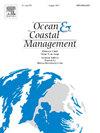鸡蛋回购计划作为一种保护工具起作用了吗?马来西亚登嘉楼绿龟(Chelonia mydas)卵保护案例研究
IF 4.8
2区 环境科学与生态学
Q1 OCEANOGRAPHY
引用次数: 0
摘要
海龟种群在全球范围内面临着各种威胁。在马来西亚,它们的数量自20世纪50年代以来一直在下降。一个主要的威胁是过度捕捞海龟蛋。在丁加奴州,海龟蛋的收集是通过贸易特许权来管理的。为了保护海龟种群,登嘉楼州渔业部(DoF)于1961年推出了一项鸡蛋回购计划,该计划包括从有执照的鸡蛋收集者那里购买鸡蛋,并将它们重新安置到受保护的孵化场。2022年,全面禁止销售和消费海龟蛋。本个案研究评估该计划作为保育措施的成效及其财政影响。我们研究了2016年至2021年间由朗登加海龟观察(现称为马来西亚海洋保护与研究组织(PULIHARA))购买的绿海龟(Chelonia mydas)蛋的孵化和出苗成功率,考虑了搬迁距离、季风季节和不同蛋收集者的处理方法等因素。从700个巢中共购入绿海龟蛋71,315枚,整体孵化成功率和羽化成功率分别为77.6%和74.1%。PULIHARA转移的鸡蛋成功率高于有执照的鸡蛋收集者处理的鸡蛋,这强调了尽量减少转移距离和改进处理方法以减少运动引起的死亡率的重要性。由于至少92.1%的巢和蛋已经在保护区和保护区内得到保护,PULIHARA花费了275,411林吉特,从登嘉楼1.7%的巢中额外保护了2.1%的蛋。虽然海龟蛋回购计划有效地保护了海龟蛋,但财政限制限制了该计划的全部潜力。高鸡蛋价格使保护预算紧张,而低价格则阻碍了保护销售。为了确保长期成功,需要政府机构、非政府组织和当地社区之间的持续合作,以及严格的执法,并可能修改许可制度,以优先考虑保护驱动的参与。本文章由计算机程序翻译,如有差异,请以英文原文为准。
Does the egg buy-back scheme work as a conservation tool? A case study for green turtle (Chelonia mydas) egg protection in Terengganu, Malaysia
Sea turtle populations face various threats globally. In Malaysia, their numbers have declined since the 1950s. One major threat is overharvesting of turtle eggs. In the state of Terengganu, turtle egg collection is regulated through a trade concession. To protect the turtle populations, the Terengganu State Department of Fisheries (DoF) introduced an egg buy-back scheme in 1961, which involves purchasing eggs from licensed egg collectors and relocating them to protected hatcheries. A complete ban on the sale and consumption of sea turtle eggs was implemented in 2022. This case study evaluates the scheme's effectiveness as a conservation measure and its financial implications. We examined hatching and emergence success of green turtle (Chelonia mydas) eggs purchased by Lang Tengah Turtle Watch, now known as Marine Conservation and Research Organisation Malaysia (PULIHARA), between 2016 and 2021, considering factors such as relocation distance, monsoon season, and handling practices among different egg collectors. A total of 71,315 green turtle eggs from 700 nests were purchased, with overall hatching and emergence success rates of 77.6 % and 74.1 %, respectively. Eggs relocated by PULIHARA showed higher success rates than those handled by licensed egg collectors, underscoring the importance of minimizing relocation distances and improving handling practices to reduce movement-induced mortality. With at least 92.1 % of nests and eggs already protected within sanctuaries and reserves, PULIHARA spent MYR 275,411 to protect an additional 2.1 % of total eggs from 1.7 % of total nests laid in Terengganu. While the egg buy-back scheme effectively safeguarded turtle eggs, financial constraints limit the scheme's full potential. High egg prices strain conservation budgets, whereas low prices deter sales to conservation. To ensure long-term success, continued collaboration among government bodies, NGOs, and local communities, along with strict enforcement, is needed, and potentially revising the licensing system to prioritize conservation-driven participation.
求助全文
通过发布文献求助,成功后即可免费获取论文全文。
去求助
来源期刊

Ocean & Coastal Management
环境科学-海洋学
CiteScore
8.50
自引率
15.20%
发文量
321
审稿时长
60 days
期刊介绍:
Ocean & Coastal Management is the leading international journal dedicated to the study of all aspects of ocean and coastal management from the global to local levels.
We publish rigorously peer-reviewed manuscripts from all disciplines, and inter-/trans-disciplinary and co-designed research, but all submissions must make clear the relevance to management and/or governance issues relevant to the sustainable development and conservation of oceans and coasts.
Comparative studies (from sub-national to trans-national cases, and other management / policy arenas) are encouraged, as are studies that critically assess current management practices and governance approaches. Submissions involving robust analysis, development of theory, and improvement of management practice are especially welcome.
 求助内容:
求助内容: 应助结果提醒方式:
应助结果提醒方式:


